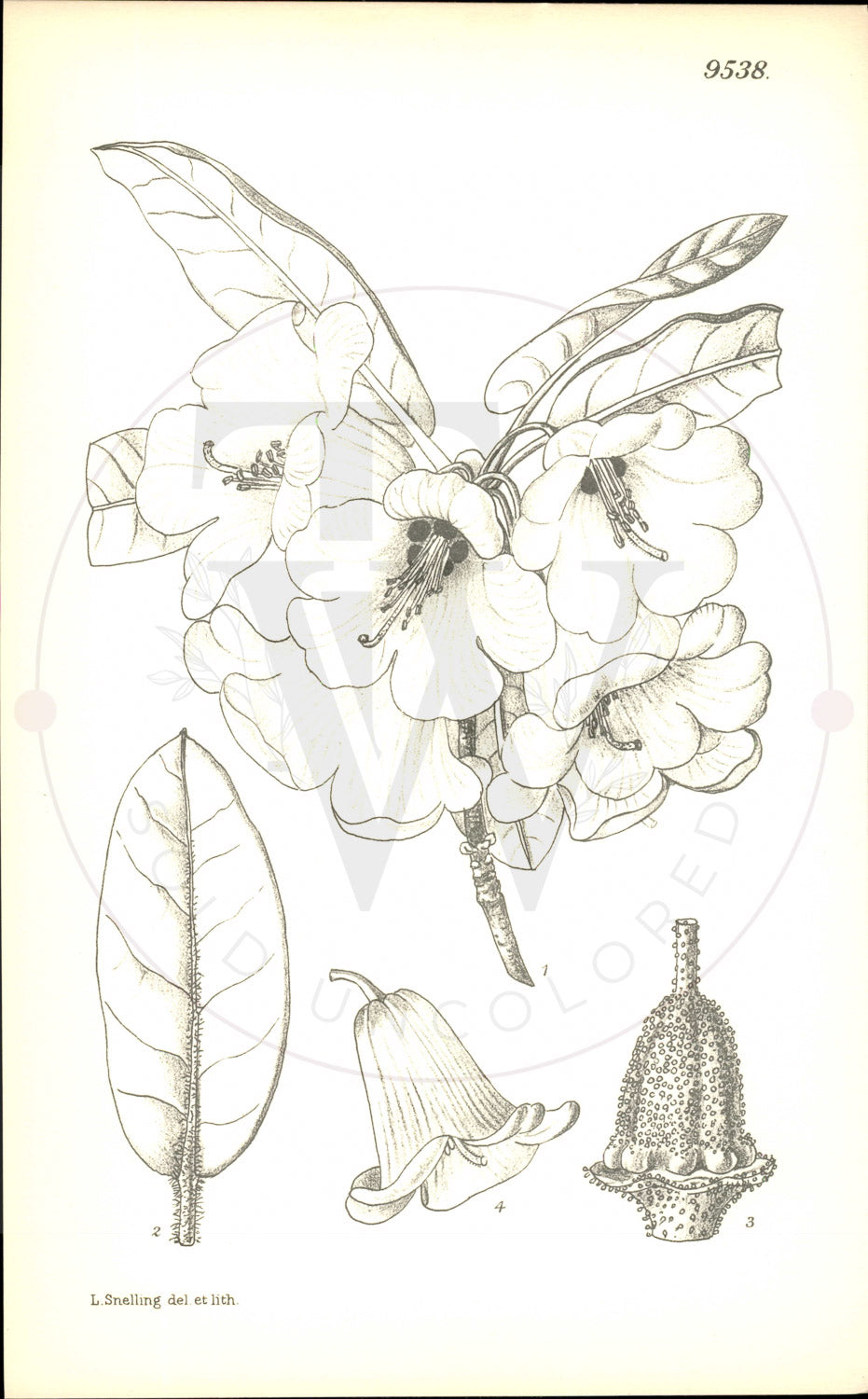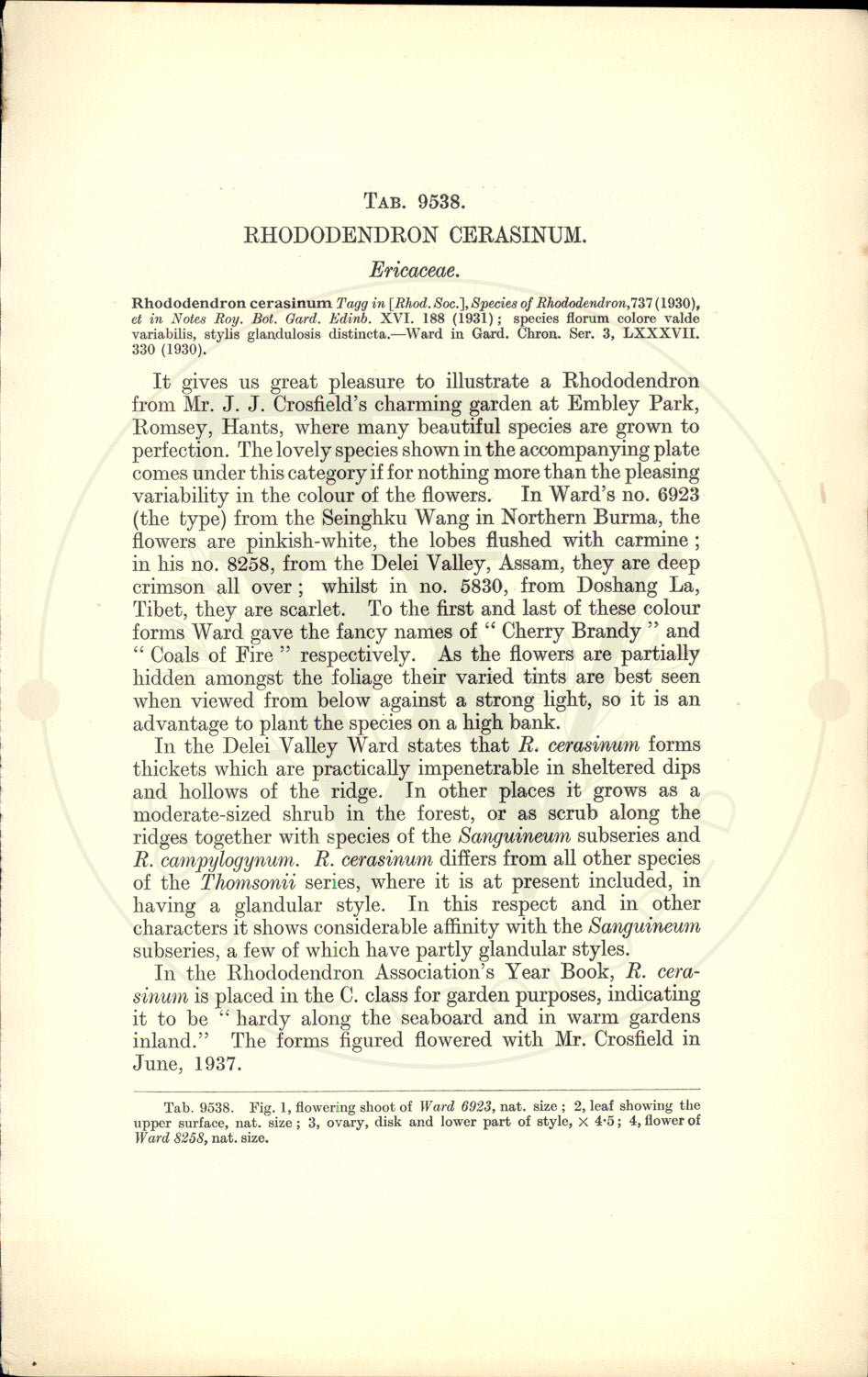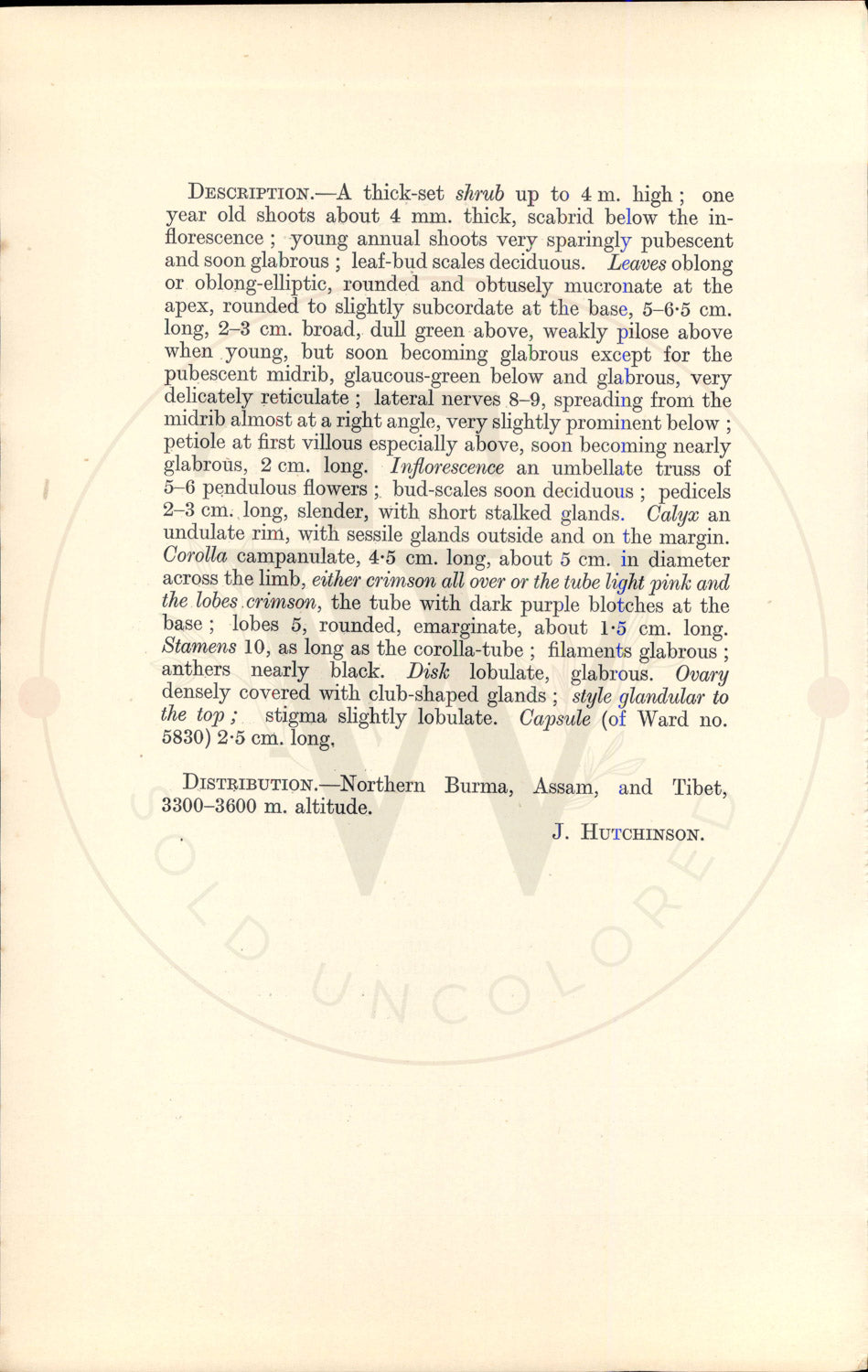Curtis Botanical Magazine
Plate 9538 - Rhododendron cerasinum
Plate 9538 - Rhododendron cerasinum
Couldn't load pickup availability
Curtis's Botanical Magazine - Plate 9538
Rhododendron cerasinum
Family: Ericaceae • Native Region: Tibet • Publication Date: January 1st, 1934
Distribution: -Northern Burma, Assam, and Tibet, • Tab Author: J. HUTCHINSON
Botanical Description
Romsey, Hants, where many beautiful species are grown to perfection. The lovely species shown in the accompanying plate comes under this category if for nothing more than the pleasing variability in the colour of the flowers. In Ward's no. 6923 (the type) from the Seinghku Wang in Northern Burma, the flowers are pinkish-white, the lobes flushed with carmine; in his no. 8258, from the Delei Valley, Assam, they are deep crimson all over; whilst in no. 5830, from Doshang La, Tibet, they are scarlet. To the first and last of these colour forms Ward gave the fancy names of "Cherry Brandy" and "Coals of Fire" respectively. As the flowers are partially hidden amongst the foliage their varied tints are best seen when viewed from below against a strong light, so it is an advantage to plant the species on a high bank. In the Delei Valley Ward states that R. cerasinum forms thickets which are practically impenetrable in sheltered dips and hollows of the ridge. In other places it grows as a moderate-sized shrub in the forest, or as scrub along the ridges together with species of the Sanguineum subseries and R. campylogynum. R. cerasinum differs from all other species of the Thomsonii series, where it is at present included, in having a glandular style. In this respect and in other characters it shows considerable affinity with the Sanguineum subseries, a few of which have partly glandular styles. In the Rhododendron Association's Year Book, R. cera- sinum is placed in the C. class for garden purposes, indicating it to be "hardy along the seaboard and in warm gardens inland." The forms figured flowered with Mr. Crosfield in June, 1937.
About This Print
Original black and white uncolored botanical print from Curtis's Botanical Magazine (established 1787). This 9000s series print is from unissued publisher stock, never hand-colored, representing the authentic plate as it appeared in the magazine. Edited by Sir Arthur William Hill for The Royal Horticultural Society, London.
Share







